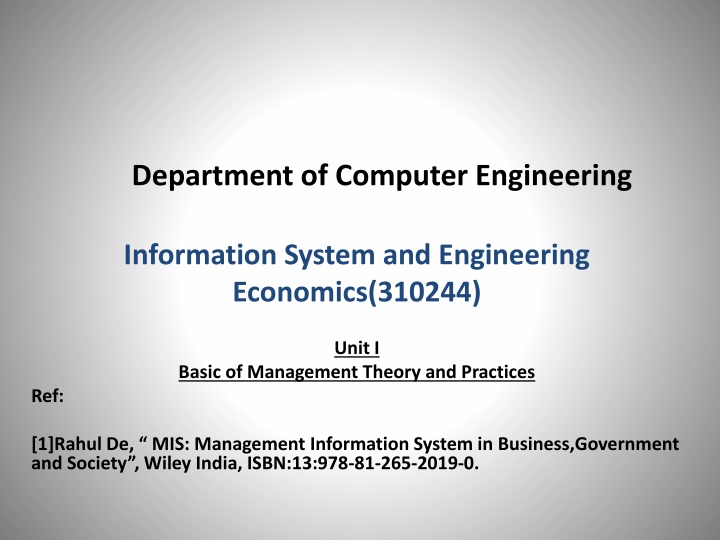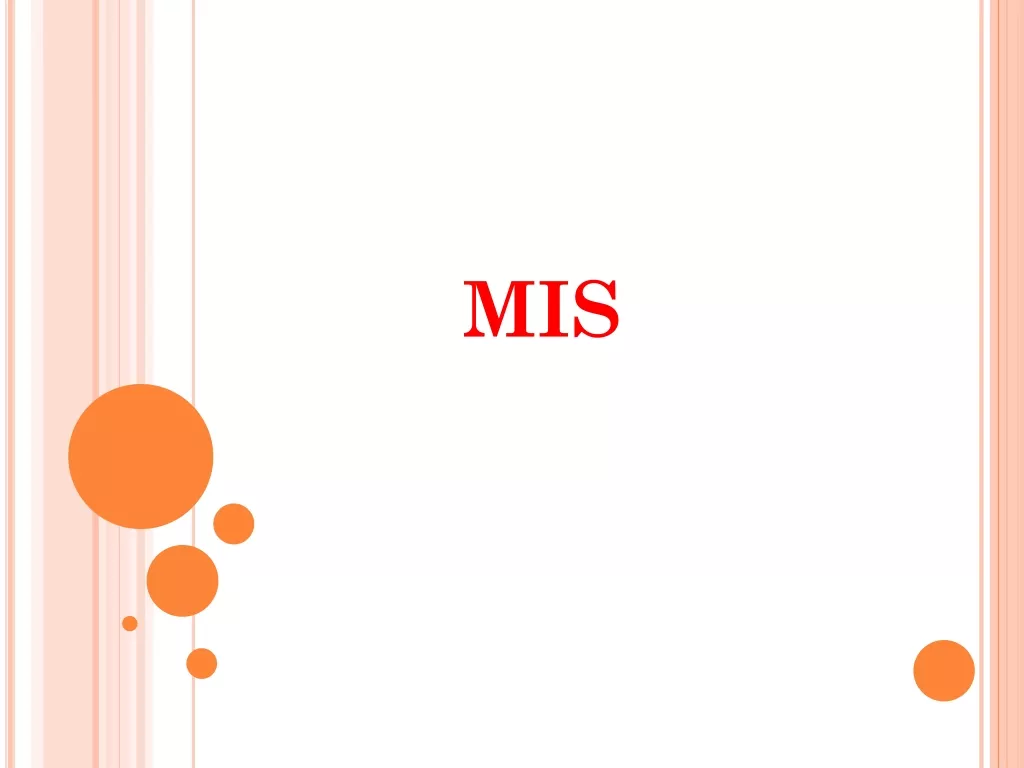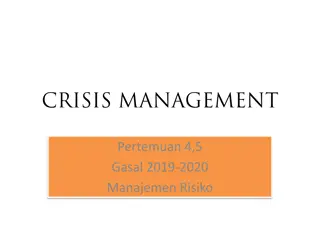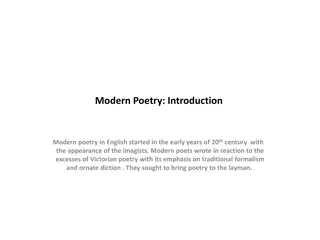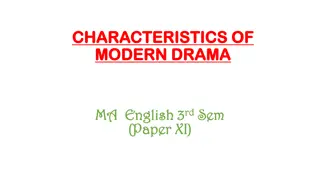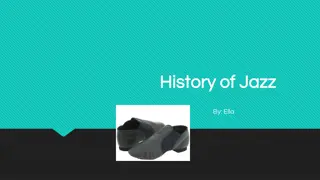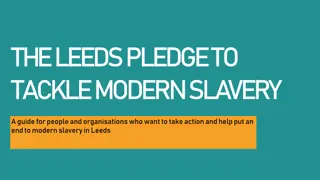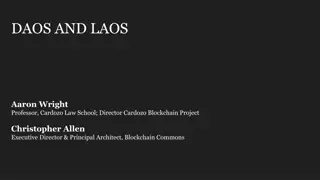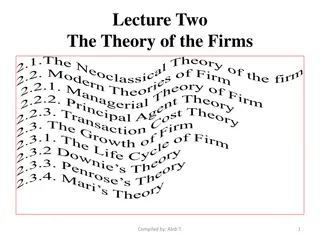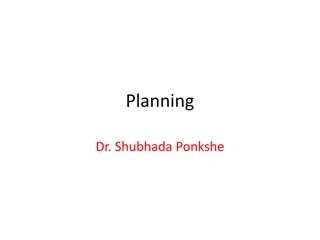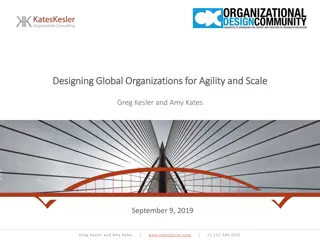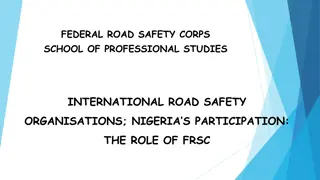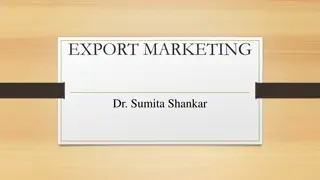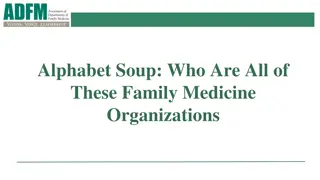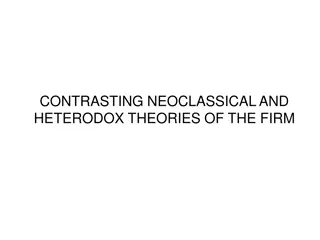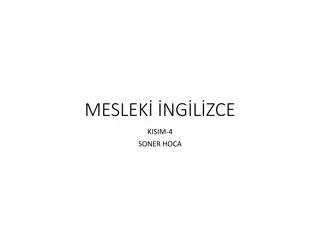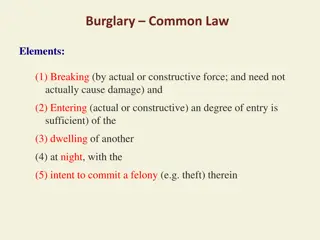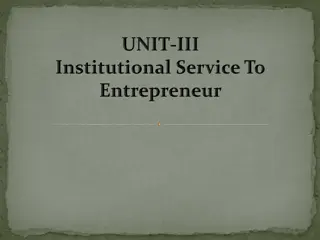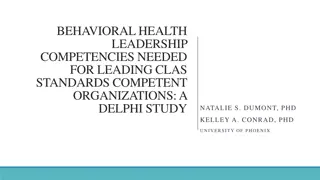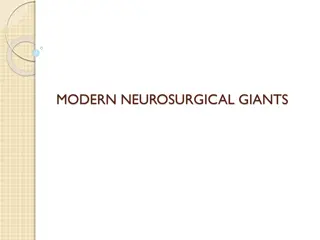Basics of Management in Modern Organizations
Role of information systems in modern organizations, challenges faced by information system managers, IT-enabled structures, and functions of dispersed and knowledge organizations.
Download Presentation

Please find below an Image/Link to download the presentation.
The content on the website is provided AS IS for your information and personal use only. It may not be sold, licensed, or shared on other websites without obtaining consent from the author.If you encounter any issues during the download, it is possible that the publisher has removed the file from their server.
You are allowed to download the files provided on this website for personal or commercial use, subject to the condition that they are used lawfully. All files are the property of their respective owners.
The content on the website is provided AS IS for your information and personal use only. It may not be sold, licensed, or shared on other websites without obtaining consent from the author.
E N D
Presentation Transcript
Department of Computer Engineering Information System and Engineering Economics(310244) Unit I Basic of Management Theory and Practices Ref: [1]Rahul De, MIS: Management Information System in Business,Government and Society , Wiley India, ISBN:13:978-81-265-2019-0.
Unit I : Basic of Management Theory & Practices Contents Role of Information Systems in Organizations, The Information System Manager and his challenges Concepts of Information Systems Information Systems and Management Strategy Case Studies - Information Systems in the Indian Railways Information Systems in an e-Commerce Organization.
Modern Organisation The world today consist of many organisation that have collection of people with shared goals. Organisation have many purpose, ranging from making profits by commercial activities to providing information to citizens. For Ex. Tata Motor of India is commercial organisation that makes car, trucks and automobiles. Indian railway is government organisation that manages massive operation by Information system for achieving their goals. It consist 9000 trains that ferry 20 million passenger daily. The passenger may alight at any of 7000 railway station and may traverse any distance of over 64,000 km of railway routes.
Example of Tata Motors Figure: Exchange information between Tata Motors and its parts vendors Tata Motors Production plan Parts Vendor Inventory and production schedule Despatch Details Goods Receipt Payment Details
Features of Modern Organisation IT-Enabled Organisation: Organisation said modern in the sense that they have built into their structure the elements of information technology that enable them to function in a manner appropriate to the demands of the environment. Networked organisation: Organisation said modern function that add in a world of digital network in addition to the physical world. The organisation are linked as node on the network where they receive and transmit information. The digital network consist internet and telecommunication network that rely on digit(0s and 1s).
Cont.. Dispersed Organisation: Large organisation is highly dispersed. The companies disperse their operation to best meet customer need or to locate function where resources such as skilled labour or raw materials are available. Knowledge Organisation: Modern organisations rely on knowledge workers to a much larger extent than older organisations. Knowledge workers enjoy greater autonomy in their work and the variety of work they have to perform .For commercial organisation, information is stored, processed and converted into forms that make it an integral part of an organisation. This is referred to organasation knowledge base.
Information system in Organisation What are Information System? Information system are collection of computers, networks, and people who create, store, modify and distributed data and information in any organisation. Computers and information technology are key ingredients of modern information system. Information Technology includes computing devices such as personal computers, notebook computers, personal digital assistant, mobile phones and various types of network that allow the computing devices to connect and to communicate.
Cont. Difference between IT and IS IT is understood as the artefacts such as computing device, software and network devices that constitute the material aspects of IS. In IT, what people buy and configure and use, whereas IS is the manner in which we understand the difference. For Ex. Printer is a IT component used in companies for printing information and report. Printer is the part of the IS of the organisation and play role in preparing reports and memos.
Conti.. Brief History of Computing Social networking Internet Personal Computer /Free software Growth of computing ALOHA Networks IBM Commercial Computers ENIAC(Electronic numerical integrator and Computer Babbage 1820s 1940s 1950s 1960s 1980s 1990s 2000s
Managing Information Systems in Organisations 1. The IT Interaction Model Managing IS in organisation is a highly challenging and complex task. It is neither organisations nor IS they remain static over time because both changes continuously. It is the job of management to ensure that the system remain useful and relevant for their organisational goals at all the times. They may have to be change their services, their products, their internal structure and the manner in which they do their business to meet the challenges of the environment. If organisation get positive changes then it spent time and money in implementing the new IS.
Cont.. When organisations introduce new IS they expect certain changes to happen as shown in figure. These changes are related to the function that IS are supposed to perform. System Implementation Process Initiation Build Introduction Maintenance The Organisation Competitive environment strategy culture IT infrastructure The Use and consequences Information U System Fig. The IT Interaction Model External Environment
Cont There are some effects in IT interaction model such as: 1.First order and second order Effect 2.Effects of competition and Organisational Traits 3.Effects of Organisational Structure 4.Support for Organisational Processes 5.Choosing and Implementing Information system
1.First order and second order Effect The outcome of the implementation of a new IS could be positive or not, and this will depend on how the organisation adapt to the new system. The outcomes that arise as a direct consequences of the introduction of an IS are known as first order effects. This is usually visible in organisation in the form of increased speed of processing of data or increases volume of processing.
Cont. For Ex. In the payroll system, increased used the organisation means hiring, transfer and promotion processes are easier to manage, and further it will create new innovative incentive schemes to motivate its employees. The organisation standing in the market and improve its overall profitability. Such effect are not visible immediately they may require years to measurable. This outcomes are known as second order effect.
2.Effects of competition and Organisational Traits The competitive environment is the competition that the firm faces in the market in which it operates. Information system are often driven by a particular competitive strategy that a firm adopts. Firm can often compete by being the lowest cost provider of a good or service and compared to the other industry goods.
Cont The culture or work culture of any organisation is understood as the shared set of values and beliefs within the organisation. The work culture of the organisation shapes the manner in which the IS are both implemented and used and determine what the eventual outcomes of the system will be.
3.Effects of Organisational Structure The structure of the organisation is the manner in which employee are constituted or grouped within the organisation. Many government dept. are structured as a hierarchy where the highest level person has the greatest authority and those reporting to the person are delegated responsibility and authority. For Ex. In government dept. the person on top of the hierarchy would be a minister and reporting to him would be secretaries, then below the secretaries would be joint secretaries an so on.
Cont The function of different people in the hierarchy would be different. Modern Organisation use a matrix structure where strict hierarchy are not present. Employee are assigned to groups based on projects and tasks they are working on and a reporting structure is established within the group for the duration of project. As project terminates then the employee are reassigned to other group within the organization
4. Support for Organisational Processes Some organisation use information system to change or challenge the existing hierarchy in place. Workflow systems may alter the manner in which employee receives documents, thus helping efficiency in the process. A process is a set of steps required to accomplish a task. and to process introduce
Cont For. Ex. Many organisation that discharge a marketing function have process by which they receive and record an order. Organisation create and use process for all the function that they perform, such as material, manufacturing storage, distribution and marketing, service etc. IS are widely used in organisation to support process. In modern organisation management) system is consider which used widely to maintain details about customer.(payment detail, purchasing, service need) CRM(customer relation
5.Choosing and Implementing Information system The task of building and implementing information system is a difficult and complex one. One of the first decision organisation have to make is whether to buy the IS from vendor or whether to build the IS in-house. Second one are not exist as they do not have an in-house team of IS professional who can build a software. They have to rely on vendor who can take an existing system product from the market and implement it directly or implement it with some modification to suit the organasation. The IS implementation begin with an initiation, or the recognition of a need for an IS.
2. Challenges for the Manager A manager who has to manage an organisation information system faces many challenges. Managing in a changing and dynamic environment means taking decision and dealing with issues keeping in mind both the needs of the moment and the issues that will arise in the future. The issue faced by modern manager who deal with IS. A CIO(Chief information officer) is typically the person in any organisation who has the responsibility of deploying and maintaining IS.
Cont.. Challenges are: A)What information system to Build? B) How Much to spend on Information System? C) What level of Capabilities should be created with Information System? D)How Centralised should the services Bar? E) What Security levels are required? F) What is the Technology Road Map for the organisation?
A)What information system to Build? IS server many purposes and objectives and the manager has to determine which need in the organisation has to be addressed. Identifying and prioritizing the need is the first task in answering this question. For Ex. A firm may want to monitor its sales activities in an ongoing manner. The manager has to decide whether the need can indeed be fulfilled by a new IS and if so, or whether IS should be inbuilt. Many types of system keep track and provide information on sales activities. The challenge for the manager is to determined which will best suit the firm needs.
Cont.. B) How Much to spend on Information System? System available in market in different price and capabilities. The manager has to decide how much money spend for system. It will consider how much competitors are spreading on similar system. This information available from industry report or form publicly available financial information. Manager often decide on the worth of an investment by assessing if Return on investment is appropriate.
C) What level of Capabilities should be created with Information System? Manager have to decide the extent of the information .The question to be consider for sale of IS are: 1.Should system support the entire sale and marketing team of the firm or should support a particular department activities? 2.Should the system include collecting data from and providing reports ? 3.Should the system be available through the internet or should it made available through internal organisation? This question clearly identifying by the needs and priorities of the system and weighted these against the budget available. Also keep in mind the issue of scalability.
Cont.. D)How Centralised should the services Bar? A centralised facility is a single large IS dept. that serves all the needs of the organisation and has employee that have the necessary skills to run a large facility. Decentralized system are those that are maintained and run by other functional dept. Managing a centralised system is easier and it can be deployed for many division and dept. in the organisation.
E) What Security levels are required? IS infrastructure are constantly under threats from internal and external source. Internal threat arise from employee stealing data or fudging accounts or misuse system. External threat arise from computer virus that enter through internet service and disrupt the functioning of the system.
F) What is the Technology Road Map for the organisation? There is a constant challenges faced by manager for that create road map for an organisation . The road map consider current infrastructure as starting point and show how the tech. is expected to evolve and change in future and how organisation will respond to those changes.
Cont The technology road map decision include the ans of the following question: Which current networking component being used? What will be the future requirement for networking? Which proprietary software replace by free open software?
Concept of Management Information System 1. Data and Information Data is a raw collection of facts. The word raw indicates that the facts have not been processed in any way. When processed, data is called information. For Ex. Consider Booking ticket on the Indian railway website. The raw data provide about your travel data .and provide the information regarding ticket availability and price. The raw data and information proceed from it are stored in software program called database. Measuring Data Data is stored in computer as 1s and 0s.All data is stored in this manner. Bits are the basic data that computers work with and store. Bits are stored in (RAM), secondary memory or hard disk . Data stored in computer memory Concept of Management Information System 110110 00 1001101101
2. Information As a Resource In commercial firms use three principle resources to carry out their business- money, labour and materials. For commercial firms, each unit of resource is said to contribute to produce some output. Generally money can be used for many things. Like money or labour , information is used in many task and activities to produce the output of the organisation. Treating information as a resource allows us to ask in what way does this resource contribute to the functioning in the organisation
Cont This information collected during ticket purchase transaction can then be used by the railway management to answer the following question: 1.At what time of the day do most passenger buy tickets online? 2. At what time of the year do ticket sales increase and peak? 3.How many choices do passenger usually consider before buying ticket? 4. Do passenger usually rely on the services of an agent to buy tickets? The first one can be answered by analyzing the ticket sales date along with time of purchase.
3.Information In Organisational Functions Any organisation works by dividing up the tasks that it has to perform among its various dept. or functions. Functions in organisation include accounting, marketing, operations, human resource management and information system management. In the modern organisation, information, data and information system are used within and across organisational functions.
Cont Four organisational function are defined: 1)Accounting Function: This function is to manage and control the resource which used by organisation is money. A typical accounting department maintain accounts or books or ledgers. 2)Marketing Function: This marketing function of an industrial manufacturing firm provides laptop to its marketing executive who visit potential and existing customer.
Cont.. 3) Operational function : In a modern manufacturing facility , information assists in managing the operation function. 4)Human Resource Function: In this function of a firm , employees enter data about their attendance, their days of leave, the function they perform.
4. Types of Information Technology Modern information system are designed largely to support individual, groups or enterprise function. Figure shows the component of information technology infrastructure in an organisation Organisation Enterprise Information Technology Network information technology Functional Information technology Environment
Cont.. 1)The functional IT: The functional information Technology component consist of applications that are used by individual users within the function for their own work.(spreadsheet, CAD, word processor). 2)The Network IT: It enables individual within functions to communicate with other to collaborate in groups.(blogs, wiki, email) 3)The Enterprise IT: It is used to support activities of individual, groups and entire function across the organisation.(acct. Dept use data i/p by marketing, sales)
5. Types of Information System 1.Transaction Processing System A transaction is an activity of the organisation that generates information. Some transaction involves exchanging the goods or services. Transaction processing system record all the transaction happened so, such system consider as an online system. For Ex. Indian Railway reservation , ATM machine.
Cont.. 2. Management Information System: Management IS process the information generated by the transaction processing system of an organisation and create reports for use by the management. MIS help the management sense of the organisation by sensing and reviewing all the activities as well as take decisions regarding future activities. The need of manager at various levels in the organisation are different. Managing director and chief executive at the highest level of an organisation.
6. Decision Making with MIS 1.Tactical Decision An important task of all employees within the organisation is to make decisions about various things. At the lowest level of organisation, the workers have to decide how to go about their work. For Ex. A sales person may have to fixed route to travel to meet several clients during the day. How many are pending and how many are attending. The sales person has clear objectives to attain and make decision to achieve this objective called tactical decision. For Ex. Nurse attending patients in a hospital ward.
2. Operational Decision Decision made by managers that have a medium term scope are often called operation decision. These decision are based on aggregate data and impact the activities for the medium term that could range from the next months. Types of operational decision supported by operational decision system as (operational manager, Finance manager, software project manager, Marketing manager). For Ex. Travelling salesman problem, Control and planning
3. Strategic Decision Another set of decision made by top managers of an organisation are termed as strategic decision. These are long term in scope and have a long horizon of years. Strategic decision are related to the vision and mission of the organisation . The decisions determine how the organisation will realise what it was created for originally.
7. Communication in organisation An important role of the information system infrastructure in organisation systems from their ability to facilitate communications. Communication can occur through any form-data, voice, video. Data communication are associated with many variety of forms: Data as short text message Data as e-mail message Data as entire documents Data as structure files.
Types of Communication There are many types of communication are as 1.Synchonous Communication: This happen when two or more parties communicate simultaneously. 2.Asynchronous communication: This happen when two or more parties communicates but not simultaneously 3. Simplex communication: This happens when communication is possible only in one direction. 4. Half Duplex communication: This happens when two person communicate with each other but not at the same time. 5.Full duplex Communication: This happens when two people can communicates with each other at the same time.
Information System and Management strategy 1.The competitive environment of business All the businesses exist in a competitive environment. Competitive environment of the automobile industry firm have to compete with each other and maintain relations with their vendors and partners. For Ex. There are many firm making car such Tata motors, maruti suzuki and hyundai motors india. Information System and Management strategy
Partnering for Mutual Benefit To function in a sustained manner, individual firms have to partner with others for a variety of reason. These partner may provide essential infrastructure such as electricity, water, transportation and communication or may provide goods and raw materials, or may help market finished goods and services. For Ex. The manufacturing firm may need to partner with the electricity utility that would fulfill its energy requirements. The manufacture firm hand over its responsibility of maintaining steady electricity supply to the utility.
Bargaining power of suppliers The competitive position of a commercial firm that enables it to serve its customers and be successful in the market is determined by a set of forces . For many firms, the best competitive strategy is to partner with many vendors to maintain a strong bargaining power relationship. Information system have the ability to reduce transaction costs and help form partnership that enables firms to improve their bargaining power with vendors.
Barriers to Entry One way to stay competitive is to prevent new players from competing. All firm have to erect barriers to entry of new competition. Information system assist in creating entry barriers for competitors by allowing formation of partnerships. For Ex. Entry barrier is creating strong link with buyers, based on long term contracts or other means.
Bargaining power of Buyers and Customer Buyers who buy the services and goods of a firm, also have a bargaining power. They can bargain, amoung other things, over prices and delivery schedules. They can seek other firm who have better prices or delivery schedule and thus bargain with the firm on these issue. One way to improve the firm bargaining power is by ensuring a superior product or service that buyers feel compelled to buy preference to competing products.
